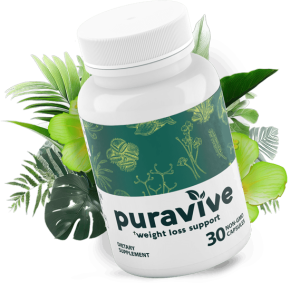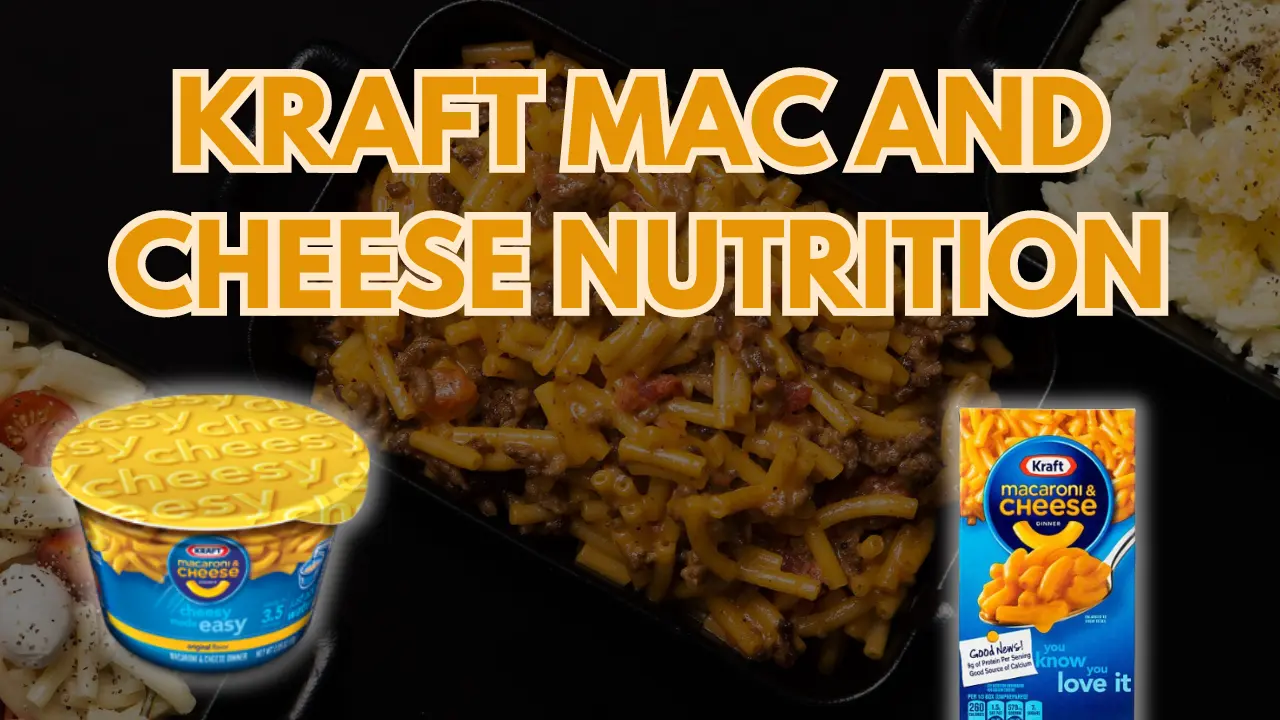Unlocking Secrets of Kraft Mac and Cheese Nutrition: A Comprehensive Guide.
Discover the nutritional breakdown of Kraft Mac and Cheese, including calorie content, protein levels, and sodium comparisons. Learn how to make it healthier and explore creative recipes to elevate this beloved comfort food.
Introduction

Kraft Mac and Cheese, the iconic blue box, has been a staple in many households for decades. Whether you’re a college student, a busy parent, or someone who simply loves comfort food, Kraft Mac and Cheese often finds its way to your table. But have you ever wondered about its nutritional content? Let’s dive deep into the nutrition facts, ingredients, health benefits, and potential concerns of this beloved dish.
What is Kraft Mac and Cheese?

History of Kraft Mac and Cheese
Kraft Mac and Cheese, known as Kraft Dinner in Canada, made its debut in 1937. Introduced by the Kraft Foods Company, it was an innovative product at the time, offering a convenient and affordable meal solution for families. The simplicity of the preparation process—just boiling the pasta and mixing it with the provided cheese sauce mix—made it an instant hit among busy households.
The product’s popularity soared during World War II due to its low cost and long shelf life. During a time of rationing and food shortages, Kraft Mac and Cheese became a staple in American homes. It allowed families to stretch their food budgets while still providing a satisfying meal. The ability to feed a family of four for just 19 cents a box was a significant factor in its widespread adoption. Its durability and ease of transport also made it a popular item among soldiers and their families.
In the decades following the war, Kraft Mac and Cheese cemented its place as a beloved comfort food. Its iconic blue box became a familiar sight in kitchens across North America. The brand has continually evolved, introducing various flavors and versions, including whole grain, gluten-free, and deluxe options, to meet changing consumer preferences. Today, Kraft Mac and Cheese remains a cultural icon, with millions of boxes sold annually, reflecting its enduring appeal and versatility as a quick, easy, and nostalgic meal choice.
Kraft Mac and Cheese Nutrition
Ingredients in Kraft Mac and Cheese

- Enriched Macaroni – Made from wheat flour, niacin, ferrous sulfate, thiamin mononitrate, riboflavin, and folic acid, providing essential nutrients.
- Whey – A dairy byproduct used to enhance the cheese flavor and add protein.
- Milkfat – Contributes to the creamy texture and rich taste of the cheese sauce.
- Cheese Culture – Contains live bacteria used in cheese-making to develop flavor and texture.
- Salt – Enhances flavor and acts as a preservative.
- Sodium Triphosphate – A stabilizer that helps maintain the consistency of the cheese sauce.
- Citric Acid – Adds a slight tanginess and acts as a preservative.
- Lactic Acid – Helps in maintaining the desired pH level of the cheese sauce.
- Yellow 5 and Yellow 6 – Artificial colorings that give the cheese sauce its vibrant orange hue.
- Enzymes – Assist in the cheese-making process and enhance flavor development.
Kraft Mac and Cheese Nutrition
Health Benefits of Kraft Mac and Cheese

- Convenient Source of Energy – High in carbohydrates, providing a quick energy boost.
- Contains Protein – Each serving offers around 9 grams of protein, essential for muscle repair and growth.
- Calcium-Rich – Good source of calcium, important for strong bones and teeth.
- Iron Content – Provides iron, crucial for red blood cell production and preventing anemia.
- Comfort Food Appeal – Can improve mood and provide comfort, which is beneficial for mental health.
- Fortified Nutrients – Enriched with essential vitamins like niacin and folic acid, supporting overall health.
- Quick and Easy Preparation – Saves time and effort, ideal for busy lifestyles.
- Shelf-Stable – Long shelf life makes it a reliable pantry staple, ensuring you always have a meal option on hand.
- Kid-Friendly – Popular among children, making it easier to meet their nutritional needs.
- Versatile Base – Can be enhanced with additional healthy ingredients like vegetables, lean meats, or legumes to boost nutritional value.
Kraft Mac and Cheese Nutrition
Calorie Comparison: Kraft Mac and Cheese vs. Homemade Mac and Cheese
| Type of Mac and Cheese | Calories per Serving (1 cup) | Description |
|---|---|---|
| Kraft Mac and Cheese | 250 | Convenient and quick, with a consistent calorie count. |
| Classic Homemade (Whole Milk, Butter, Cheddar) | 450 | Rich and creamy, typically higher in calories due to full-fat ingredients. |
| Homemade with Skim Milk and Light Butter | 350 | Lower calorie alternative by using lighter dairy products and less butter. |
| Homemade with Whole Grain Pasta | 400 | Slightly higher in calories but offers additional fiber and nutrients. |
| Homemade with Cauliflower | 200 | Lower calorie option, substituting pasta with cauliflower. |
| Homemade Vegan (Cashew Cheese) | 300 | Uses plant-based ingredients, lower in saturated fats. |
| Homemade with Reduced Fat Cheese | 375 | Reduced-fat cheese lowers the overall calorie count. |
| Gourmet Homemade (Gouda, Cream) | 500 | Rich and decadent, higher in calories due to gourmet ingredients. |
| Homemade with Added Vegetables | 320 | Incorporates vegetables, adding nutrients but keeping calories moderate. |
| Homemade with Lean Protein (Chicken) | 400 | Adds protein, making it more filling and balanced, with moderate calorie content. |
Analysis
- Kraft Mac and Cheese – A convenient and lower-calorie option compared to many homemade versions.
- Classic Homemade – Higher in calories due to richer ingredients like whole milk and butter.
- Homemade with Skim Milk – Reduces calories by using lighter dairy alternatives.
- Whole Grain Pasta – Adds fiber and nutrients, with a slight increase in calories.
- Cauliflower Substitute – Significantly cuts calories, ideal for low-carb diets.
- Vegan Version – Moderate calorie count with plant-based ingredients, good for reducing saturated fats.
- Reduced Fat Cheese – Lowers calorie content while still maintaining flavor.
- Gourmet Homemade – Highest in calories due to rich, high-fat ingredients.
- Added Vegetables – Boosts nutrition with a moderate calorie increase.
- Lean Protein Addition – Balances calories and adds satiety with protein.
Kraft Mac and Cheese Nutrition
Potential Health Concerns of Kraft Mac and Cheese

- High Sodium Content – Each serving contains about 700 milligrams of sodium, which can contribute to high blood pressure.
- Saturated Fat – Contains around 3 grams of saturated fat per serving, potentially impacting heart health if consumed in excess.
- Artificial Ingredients – Includes artificial colors and preservatives that some consumers may prefer to avoid.
- Low Fiber – Lacks significant dietary fiber, which is important for digestive health.
- Processed Food – Being highly processed, it may not offer the same nutritional benefits as whole foods.
- High Glycemic Index – The refined carbohydrates can cause spikes in blood sugar levels.
- Lactose Content – Contains dairy, which can be problematic for those with lactose intolerance.
- Potential Allergens – Made with wheat and milk, posing a risk for individuals with gluten or dairy allergies.
- Empty Calories – High in calories but low in essential nutrients like vitamins and minerals.
- Overconsumption Risk – Its tasty and convenient nature may lead to overeating, contributing to weight gain.
Kraft Mac and Cheese Nutrition
Protein Levels: Kraft Mac and Cheese vs. Other Instant Mac and Cheese Brands
| Brand | Protein per Serving (1 cup) | Description |
|---|---|---|
| Kraft Mac and Cheese | 9 grams | Classic option with moderate protein content. |
| Annie’s Homegrown | 10 grams | Organic ingredients with slightly higher protein. |
| Velveeta Shells & Cheese | 12 grams | Rich and creamy with added protein content. |
| Horizon Organic | 11 grams | Uses organic dairy for a higher protein count. |
| Lean Cuisine Mac and Cheese | 14 grams | Designed for weight management, higher in protein. |
| Trader Joe’s | 8 grams | Affordable and tasty, slightly lower in protein. |
| Amy’s Organic Mac and Cheese | 13 grams | Organic, vegetarian-friendly with a higher protein level. |
| Back to Nature | 9 grams | Similar to Kraft, but often preferred for its natural ingredients. |
Analysis
- Kraft Mac and Cheese – Provides a moderate 9 grams of protein per serving, making it a solid but not standout choice.
- Annie’s Homegrown – Slightly higher protein at 10 grams, with an emphasis on organic ingredients.
- Velveeta Shells & Cheese – Offers 12 grams of protein, appealing for those seeking a creamier texture with more protein.
- Horizon Organic – Uses organic dairy to provide 11 grams of protein, balancing quality with higher protein content.
- Lean Cuisine Mac and Cheese – High at 14 grams, ideal for those focused on protein intake and weight management.
- Trader Joe’s – Lower at 8 grams, but still a good budget-friendly option with decent taste.
- Amy’s Organic Mac and Cheese – High protein at 13 grams, suitable for organic and vegetarian diets.
- Back to Nature – Matches Kraft with 9 grams of protein, preferred by some for its natural ingredient focus.
Kraft Mac and Cheese Nutrition
Comparison: Kraft Mac and Cheese vs. Other Brands
| Aspect | Kraft Mac and Cheese | Other Brands |
|---|---|---|
| Price | Affordable | Varied, ranging from budget-friendly to gourmet options |
| Packaging | Iconic blue box | Various packaging styles, including pouches and boxes |
| Flavor Options | Classic cheese | Various flavors, including white cheddar and deluxe |
| Ingredients | Enriched macaroni, cheese sauce mix, additives | Vary by brand, some using organic or natural ingredients |
| Sodium Content | Around 700 mg per serving | Varies, some brands offer reduced-sodium options |
| Protein Content | Approximately 9 grams per serving | Varies, some brands offer higher protein varieties |
| Nutritional Profile | Moderate calories, fat, and sodium | Varies widely based on ingredients and formulations |
| Shelf Life | Long shelf life | Similar to Kraft, with variations depending on packaging |
| Customer Popularity | Widely popular, millions of boxes sold annually | Varied, with some brands having niche followings |
| Accessibility | Available in most grocery stores | Availability may vary by region and store selection |
Overall, while Kraft Mac and Cheese remains a staple and popular choice for many households, there are various other brands with different offerings to suit different preferences and dietary needs.
Kraft Mac and Cheese Nutrition
Is Kraft Mac and Cheese Suitable for Different Diets?
Kraft Mac and Cheese can be adapted to fit various dietary preferences and restrictions. Here’s how it fares for seven different diets:
- Vegetarian: Kraft Mac and Cheese is suitable for vegetarians as it contains no meat products. However, individuals adhering to a strict vegetarian diet may want to check the ingredient list for any animal-derived components like rennet in the cheese.
- Vegan: While the traditional Kraft Mac and Cheese contains dairy, there are vegan alternatives available in the market or homemade recipes that use plant-based ingredients like cashew cheese or nutritional yeast to mimic the cheesy flavor.
- Gluten-Free: Kraft offers a gluten-free version of its mac and cheese made with rice pasta, making it suitable for individuals with gluten intolerance or celiac disease.
- Low-Carb: The original Kraft Mac and Cheese is not suitable for low-carb diets due to the pasta’s high carbohydrate content. However, individuals following a low-carb lifestyle can use alternatives like cauliflower or zucchini noodles to create a similar dish.
- Low-Fat: While Kraft Mac and Cheese contains some fat from the cheese and milk, individuals looking for a lower-fat option can use skim milk and reduced-fat cheese or explore brands that offer lower-fat varieties.
- Dairy-Free: For individuals with lactose intolerance or dairy allergies, Kraft may not be suitable. However, they can opt for dairy-free alternatives available in the market or prepare homemade versions using dairy-free cheese and milk substitutes.
Kraft Mac and Cheese Nutrition
How to Make Kraft Mac and Cheese Healthier

- Use Whole Grain Pasta: Opt for whole grain or whole wheat pasta instead of the traditional pasta to increase fiber content and promote better digestion.
- Add Vegetables: Mix in cooked vegetables like broccoli, peas, spinach, or bell peppers to boost the nutritional value with vitamins, minerals, and fiber.
- Use Lean Protein: Incorporate lean protein sources such as grilled chicken, turkey, or tofu to increase satiety and add muscle-building nutrients.
- Use Low-Fat Milk: Replace whole milk with skim milk or low-fat milk to reduce the overall fat content while still maintaining creaminess.
- Use Less Butter: Cut back on the amount of butter or margarine added to the cheese sauce to decrease saturated fat intake.
- Choose Reduced-Fat Cheese: Opt for reduced-fat or part-skim cheese options to lower the calorie and fat content while still enjoying the cheesy flavor.
- Season with Herbs and Spices: Enhance the flavor of the dish with herbs and spices like garlic powder, onion powder, paprika, or Italian seasoning instead of relying solely on salt.
- Add Nutritional Yeast: Incorporate nutritional yeast into the cheese sauce for a cheesy flavor boost without adding extra fat or calories, plus it’s rich in B vitamins.
Kraft Mac and Cheese Nutrition
How does the sodium content of Kraft Mac and Cheese compare to reduced-sodium versions?
| Type of Mac and Cheese | Sodium per Serving (1 cup) | Description |
|---|---|---|
| Kraft Mac and Cheese | Around 700 mg | Traditional version with standard sodium content, which may be high for individuals watching sodium intake. |
| Kraft Mac and Cheese (Reduced-Sodium) | Approximately 400 mg | Reduced-sodium option with less salt, suitable for individuals on low-sodium diets or monitoring sodium intake. |
| Annie’s Homegrown (Regular) | About 600 mg | Organic mac and cheese with slightly lower sodium content than Kraft’s traditional version. |
| Annie’s Homegrown (Reduced-Sodium) | Around 300 mg | Reduced-sodium option from Annie’s, offering significantly less salt for those seeking a healthier alternative. |
| Velveeta Shells & Cheese | Roughly 800 mg | Higher sodium content compared to Kraft’s standard version, making it less suitable for low-sodium diets. |
Analysis:
- Kraft Mac and Cheese (Standard): Contains around 700 mg of sodium per serving, which may be high for individuals with dietary restrictions or monitoring sodium intake.
- Kraft Mac and Cheese (Reduced-Sodium): Offers a reduced-sodium alternative with approximately 400 mg of sodium per serving, making it a better choice for those on low-sodium diets.
- Annie’s Homegrown: Provides a slightly lower sodium content than Kraft’s traditional version, appealing to consumers looking for organic options with moderate sodium levels.
- Annie’s Homegrown (Reduced-Sodium): Offers a significantly lower sodium content of around 300 mg per serving, making it an excellent choice for individuals prioritizing lower sodium intake.
- Velveeta Shells & Cheese: Contains a higher sodium content compared to Kraft’s standard version, which may not be suitable for individuals with sodium-sensitive conditions.
By opting for reduced-sodium versions or alternatives like Annie’s Homegrown Reduced-Sodium, individuals can enjoy the convenience of mac and cheese while managing their sodium intake more effectively.
Kraft Mac and Cheese Nutrition
Kraft Mac and Cheese for Kids
- Kid-Friendly Taste:
With its creamy cheese sauce and soft macaroni, Kraft Mac and Cheese offers a taste that appeals to children’s palates. - Quick and Easy:
Busy parents appreciate the convenience of preparing Kraft Mac and Cheese in just minutes, making it a go-to option for weeknight dinners or quick lunches. - Familiarity:
Many kids grow up enjoying Kraft Mac and Cheese as a comfort food, creating a sense of nostalgia and familiarity. - Versatility:
Parents can customize Kraft Mac and Cheese by adding extra ingredients like vegetables, grilled chicken, or tuna to boost nutrition and create new flavors. - Fun Shapes:
Some variations of Kraft Mac and Cheese come in fun shapes like dinosaurs or characters, adding an element of excitement to mealtime for kids. - Affordability:
Kraft Mac and Cheese is budget-friendly, allowing families to provide a satisfying meal without breaking the bank. - Acceptance:
Even picky eaters are often willing to eat Kraft Mac and Cheese, making it a reliable option for ensuring children get a meal they’ll enjoy.
Kraft Mac and Cheese Nutrition
Kraft Mac and Cheese Recipes
- Cheesy Broccoli Mac: Prepare Kraft Mac and Cheese according to package instructions, then stir in steamed broccoli florets and diced cooked chicken. Sprinkle with extra shredded cheese before serving for an extra cheesy twist.
- Taco Mac and Cheese: Cook Kraft Mac and Cheese as usual, then mix in cooked ground beef seasoned with taco seasoning. Top with diced tomatoes, sliced black olives, and a dollop of sour cream for a Tex-Mex inspired meal.
- Buffalo Chicken Mac: Make Kraft Mac and Cheese, then toss in shredded cooked chicken mixed with buffalo sauce. Serve with a drizzle of ranch dressing and chopped green onions for a spicy and tangy twist.
- Bacon and Tomato Mac: Cook Kraft Mac and Cheese and fold in crispy bacon pieces and diced tomatoes. Top with a sprinkle of breadcrumbs and grated Parmesan cheese, then bake until golden and bubbly for a comforting casserole.
- Pesto Veggie Mac: Stir prepared Kraft Mac and Cheese with store-bought or homemade pesto sauce. Add sautéed vegetables like cherry tomatoes, zucchini, and spinach for a vibrant and flavorful dish.
- BBQ Pulled Pork Mac: Mix shredded cooked pork with your favorite barbecue sauce, then combine with Kraft Mac and Cheese. Top with crunchy coleslaw for a Southern-inspired meal with a twist.
- Pizza Mac and Cheese: Stir in marinara sauce, pepperoni slices, and chopped bell peppers into cooked Kraft Mac and Cheese. Sprinkle with shredded mozzarella cheese and bake until bubbly for a pizza-inspired treat.
Kraft Mac and Cheese Nutrition
Conclusion

In conclusion, Kraft Mac and Cheese continues to be a beloved and versatile staple in households across the globe. Its convenience, affordability, and comforting taste make it a go-to option for busy weeknights, quick lunches, or whenever a craving for cheesy goodness strikes. Whether enjoyed as a simple side dish or elevated into creative recipes, Kraft Mac and Cheese offers a reliable solution for satisfying hunger and bringing smiles to faces of all ages.
Despite its popularity, it’s important to consider Kraft Mac and Cheese within the context of a balanced diet. While it provides a convenient meal option, moderation is key, especially considering factors like sodium and saturated fat content. By incorporating additional ingredients like lean protein, vegetables, and whole grains, families can enhance the nutritional value of their Kraft Mac and Cheese meals while still enjoying its comforting taste and convenience.
Overall, Kraft Mac and Cheese holds a special place in the hearts and kitchens of many, serving as a versatile canvas for creativity and comfort. Whether enjoyed by kids as a quick and tasty meal or by adults seeking a nostalgic taste of childhood, Kraft Mac and Cheese remains a timeless classic that continues to bring joy and satisfaction to countless households worldwide.
FAQs About Kraft Mac and Cheese

- Is Kraft Mac and Cheese bad for you?
- It’s not inherently bad, but it should be consumed in moderation due to its high sodium and fat content.
- Can you eat Kraft Mac and Cheese on a diet?
- Yes, with portion control and balance with other healthy foods, it can fit into a diet.
- Does Kraft Mac and Cheese have gluten?
- The original version does, but there is a gluten-free option available.
- How can I make Kraft Mac and Cheese healthier?
- Add vegetables, use lower-fat milk, and try whole grain pasta.
- Is Kraft Mac and Cheese suitable for vegetarians?
- Yes, it is suitable for vegetarians but not for vegans.














